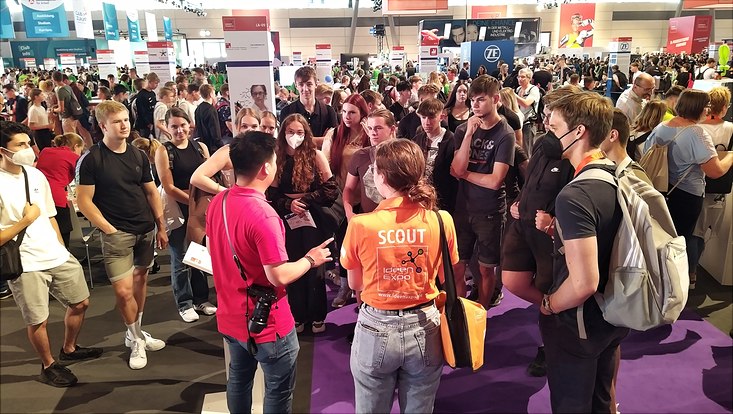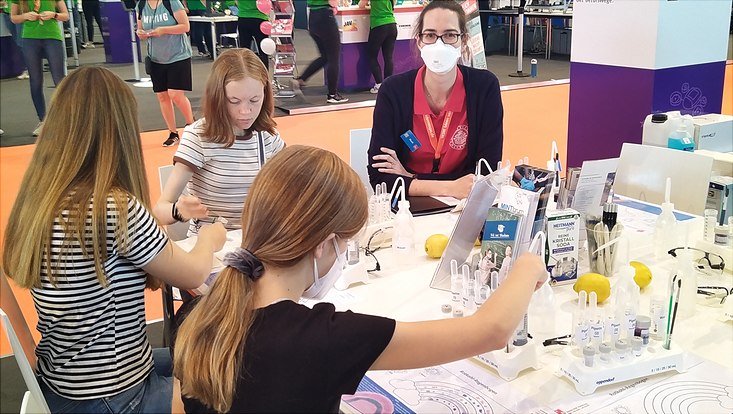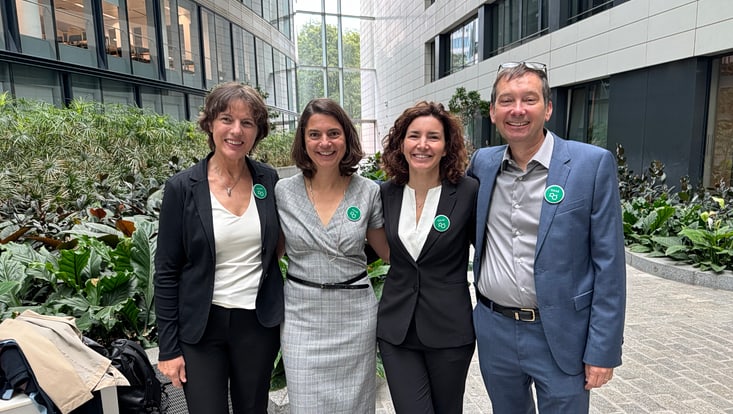Imaging of Matter
With red cabbage to the IdeenExpo
20 July 2022

Photo: UHH/FB Chemie, Jens Tröller
More than 425,000 children and young people visited the IdeenExpo in Hannover during the nine days of the fair. At the stand of the Department of Chemistry visitors tried things out, marveled, and talked to the team about the exhibits and research. The chemistry school lab "Molecules & Schools" was also there for the first time.
"It was a very nice experience to see so many interested children and young people at the fair," says Dr. Skadi Kull, who coordinates the school lab. IdeenExpo in Hanover has become the largest career fair for the STEM sector in Germany. IdeenExpo GmbH was founded back in 2007 with the aim of getting young people excited about technology and science and recruiting skilled workers for the STEM fields. Since then, the hands-on event has been held every two years with the participation of companies, research institutions, universities and schools.
The Department of Chemistry has also been involved for a long time, with doctoral students from the Institute of Technical and Macromolecular Chemistry. Their goal is to show interested parties what paths a chemically oriented course of study can open up, for example, demonstrated by questions that are currently being worked on at the institutes.

Skadi Kull and her team had packed the experiment set for the red cabbage indicator: The students can make a red cabbage indicator from simple household ingredients and investigate the variety of colors of the red cabbage juice using different acidic and basic foods or household products. This is a fun way for them to learn about how indicators work and what they mean.
"Molecules & Schools" is funded by the Cluster of Excellence "CUI: Advanced Imaging of Matter" and offers projects in the chemistry school lab that cannot be realized in school because, for example, the equipment is not available. But since visits to the school lab were not possible for a long time, Skadi Kull looked for other ways to get students excited about science. The result is, among others, the "Building Blocks of Life" kit or the indicator experiment, which works with simple household resources and is mainly offered as an online module.


